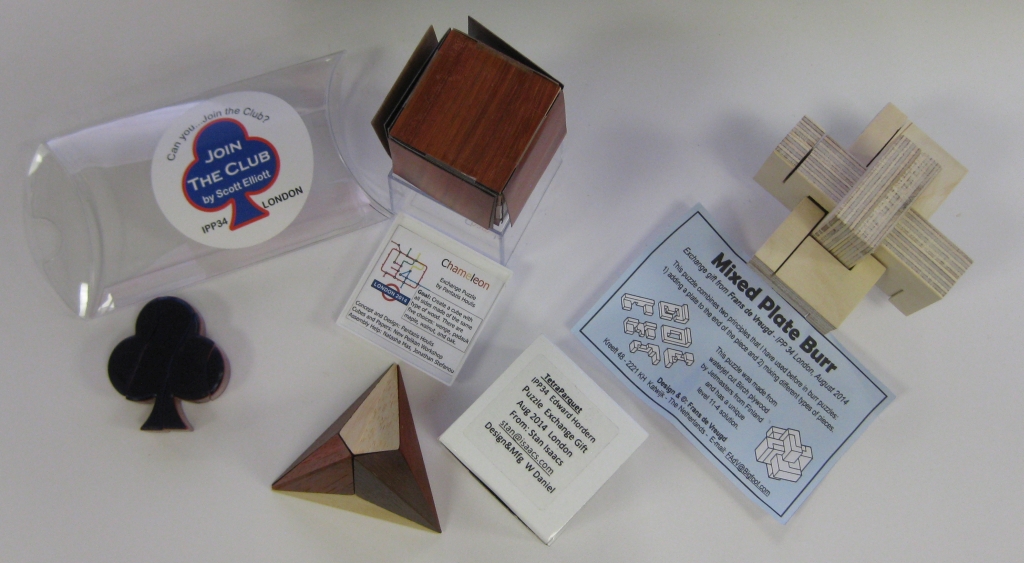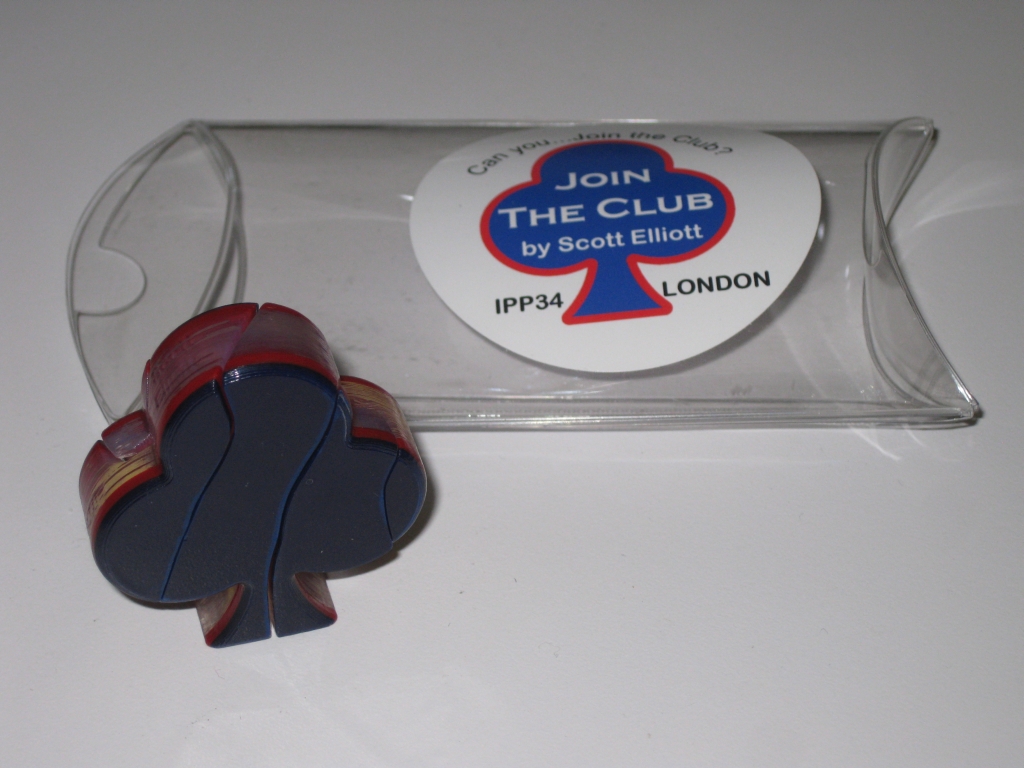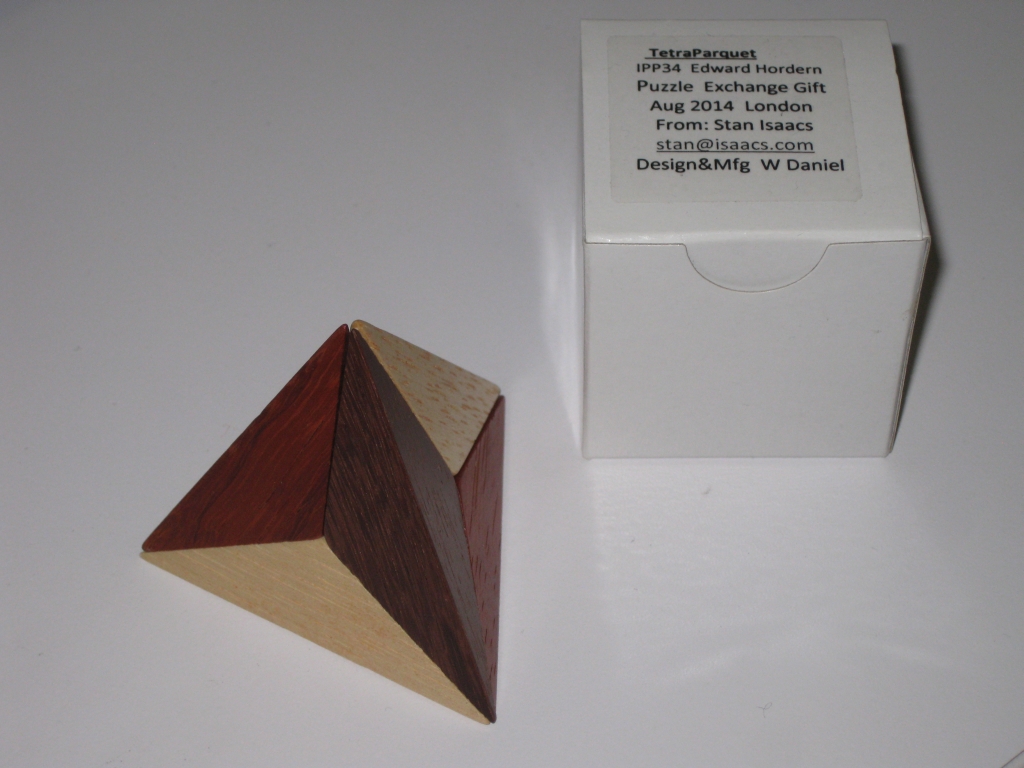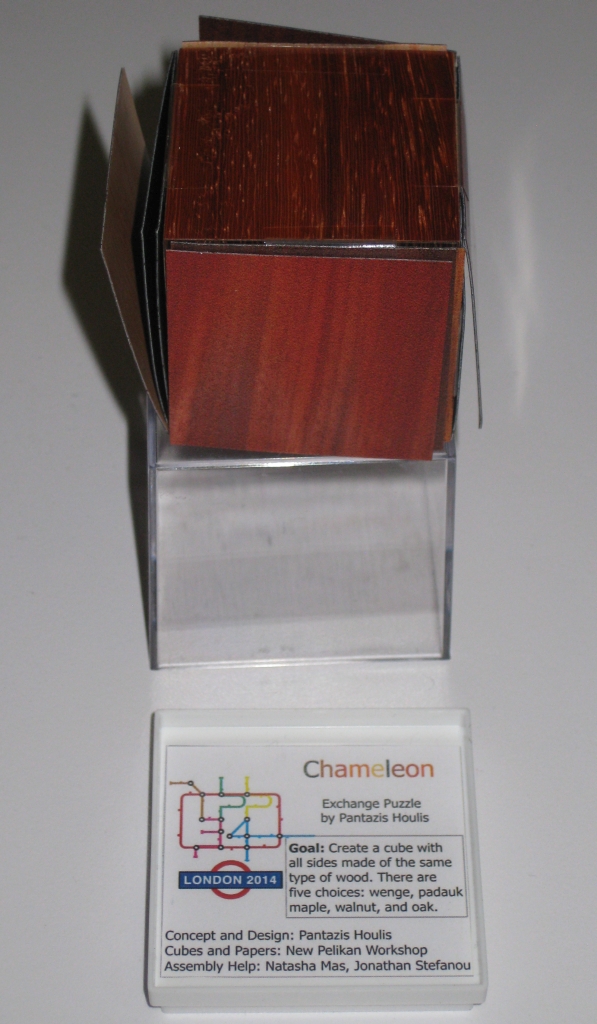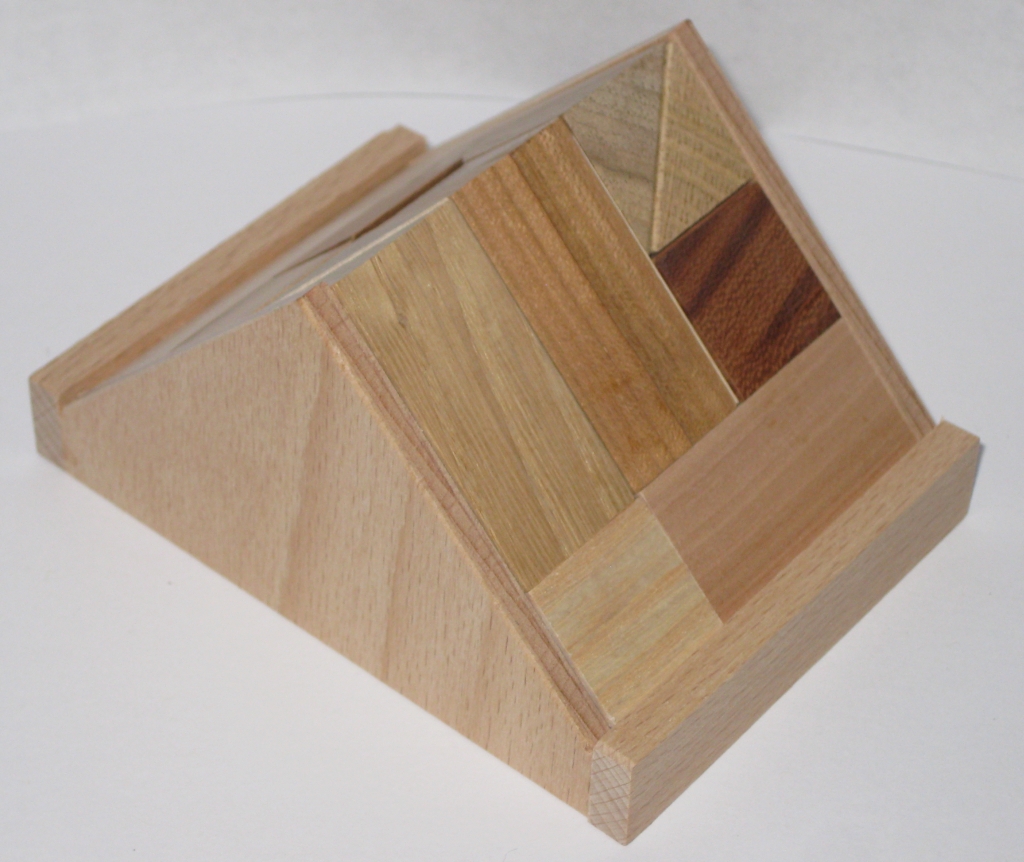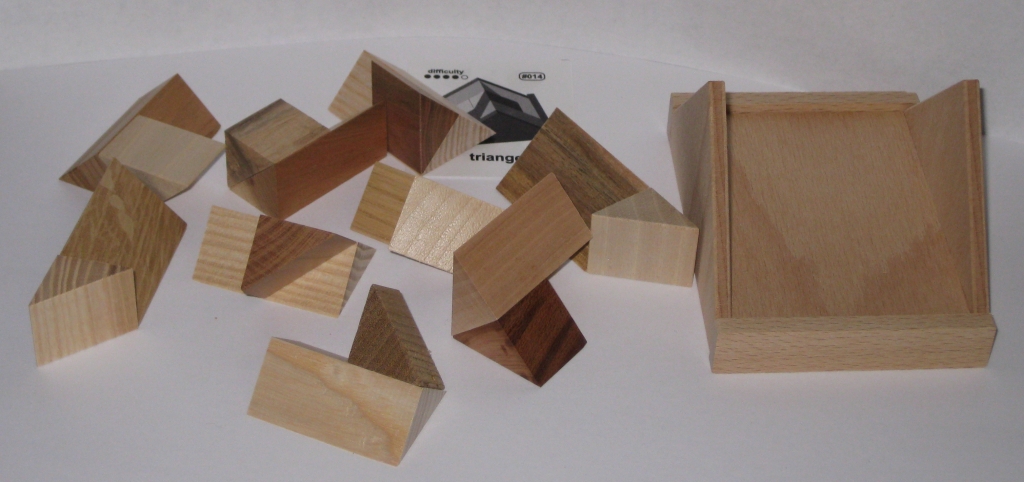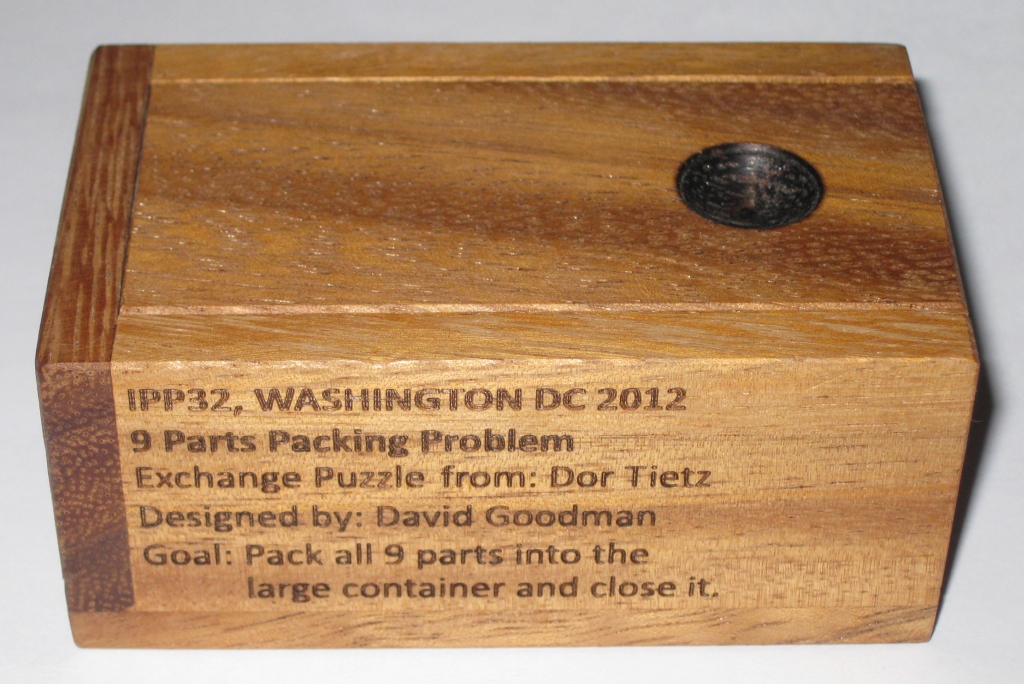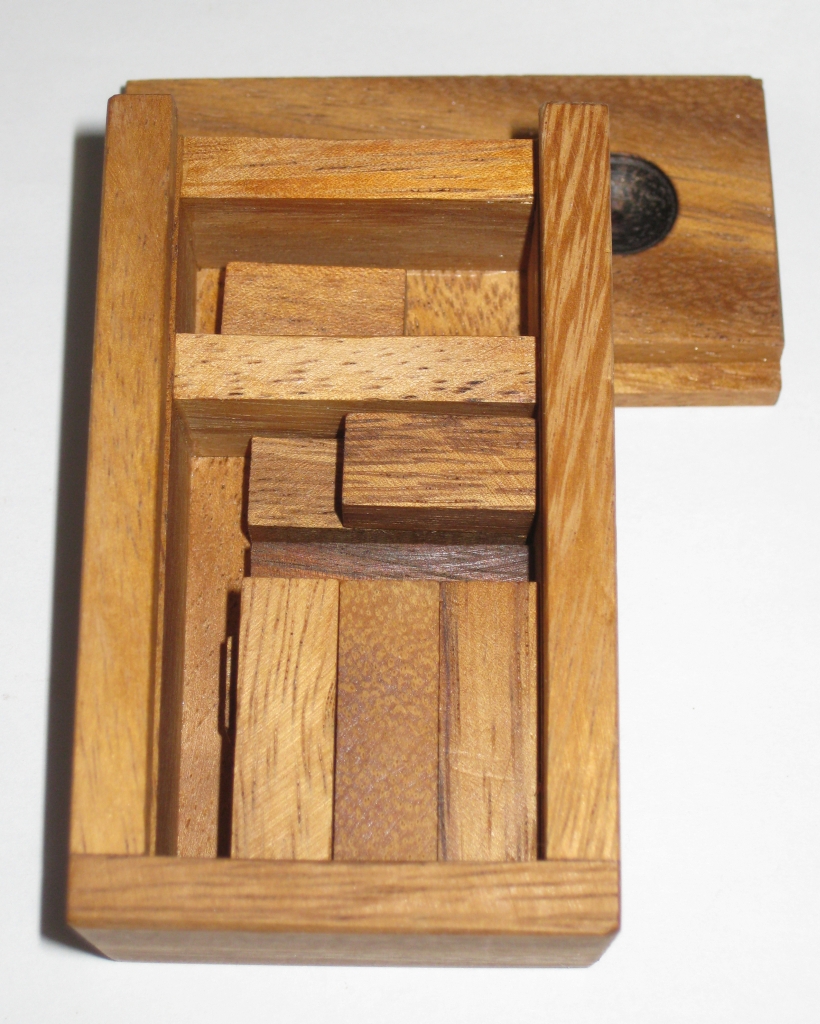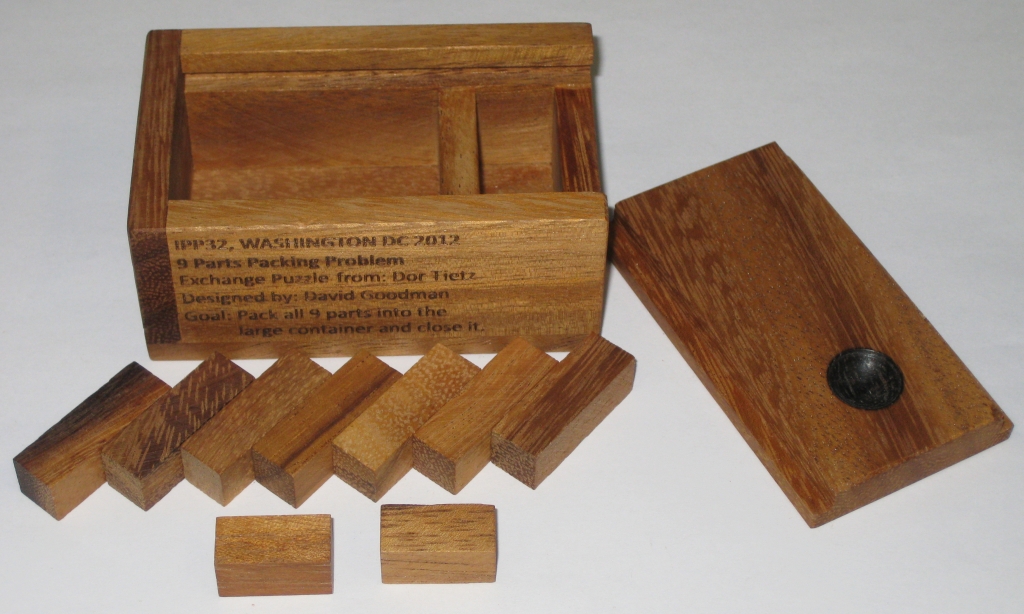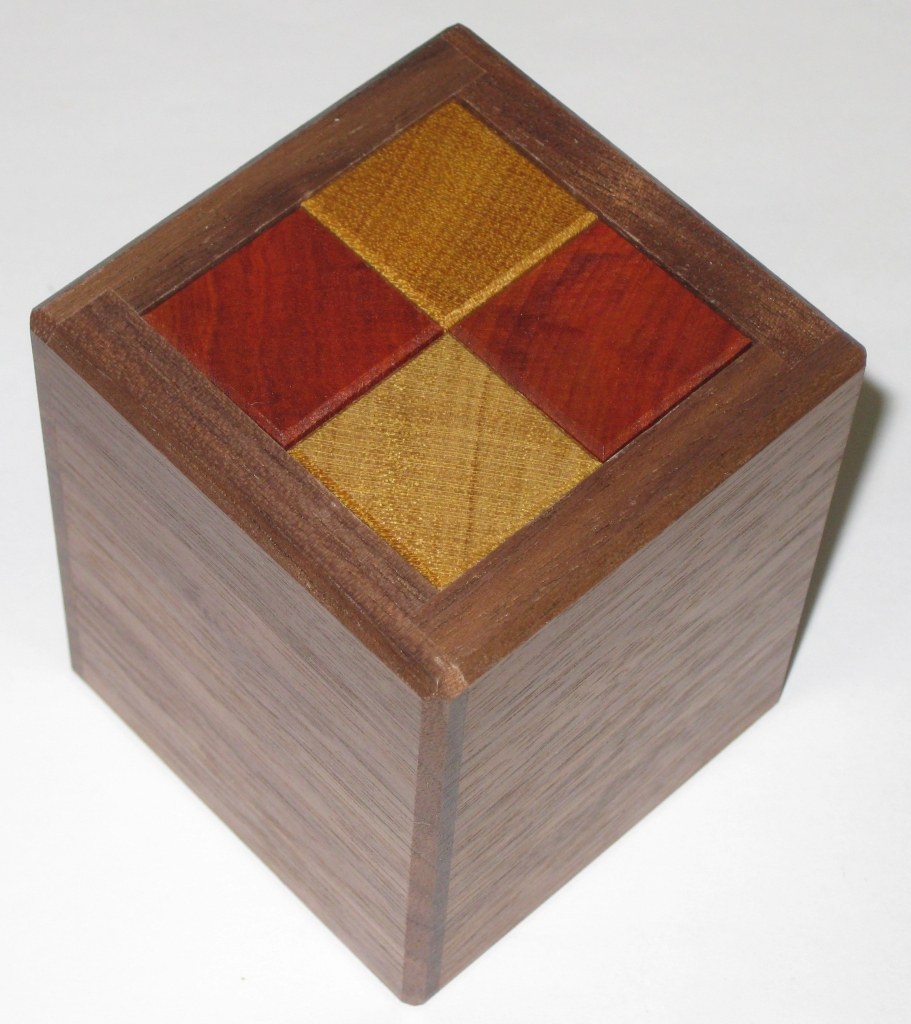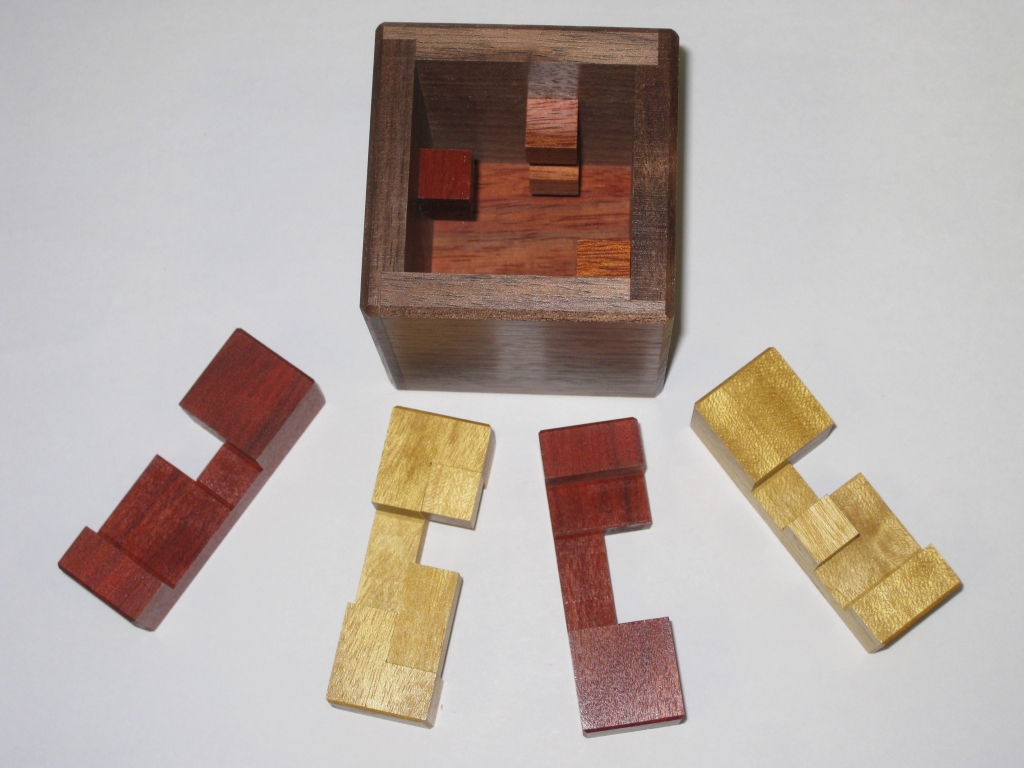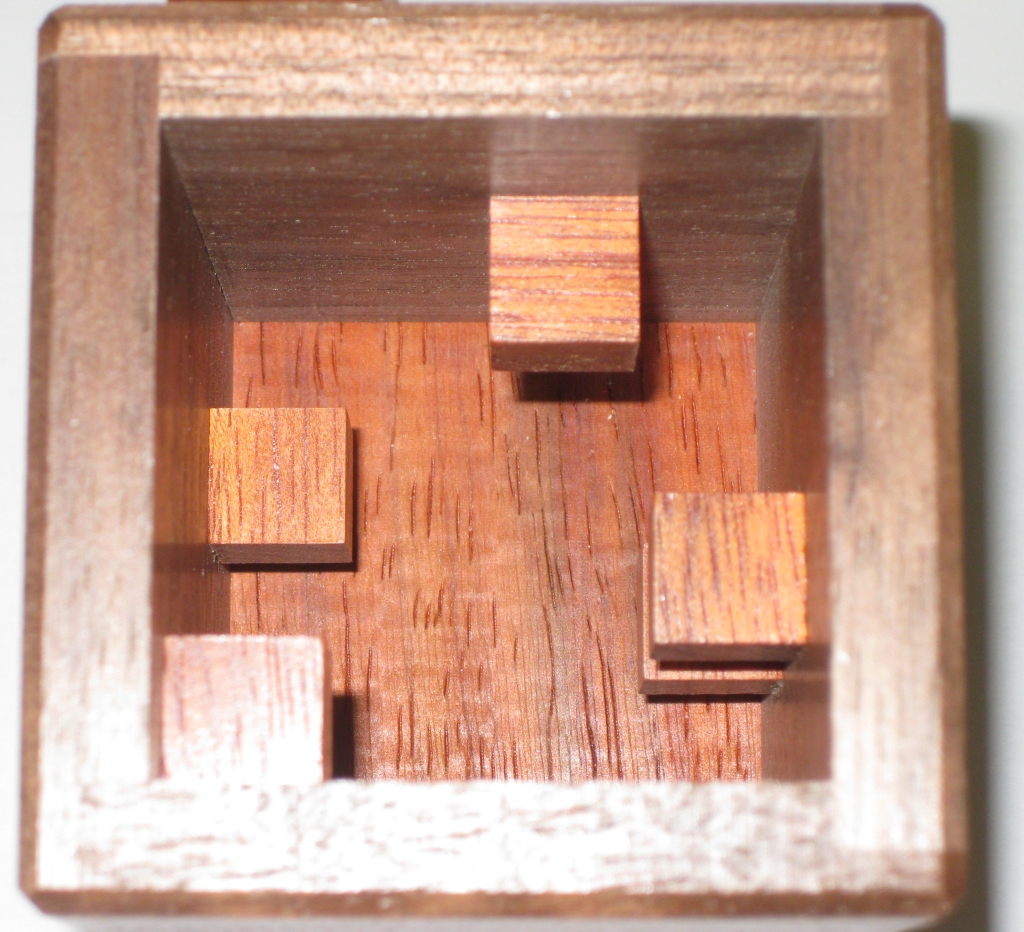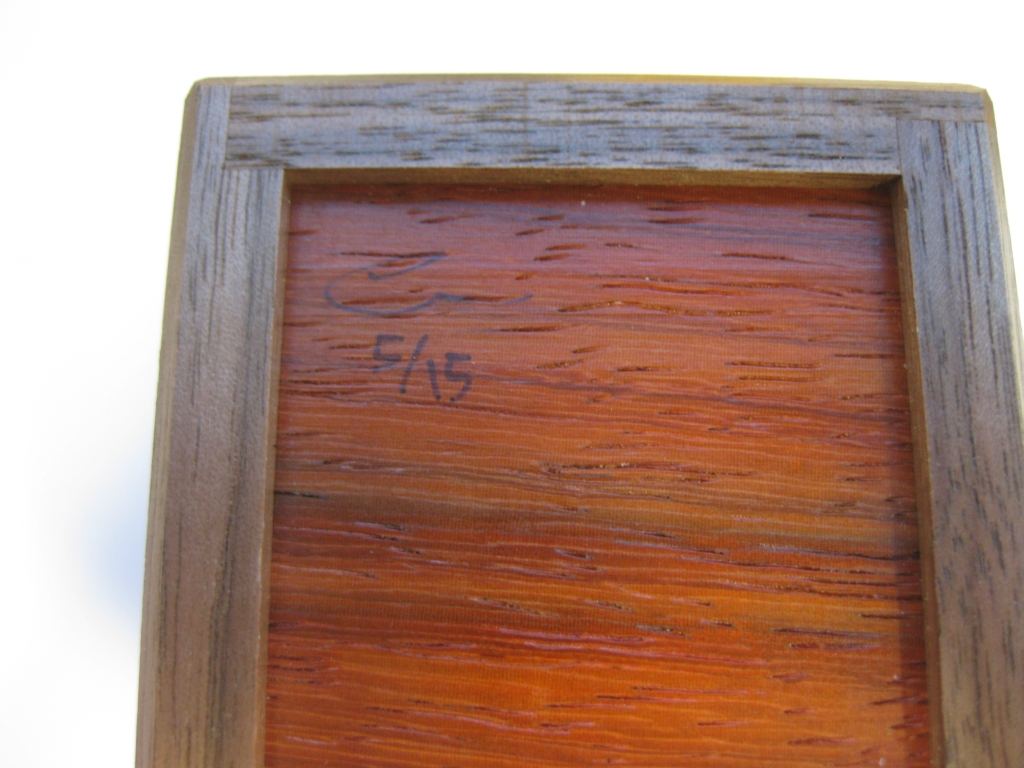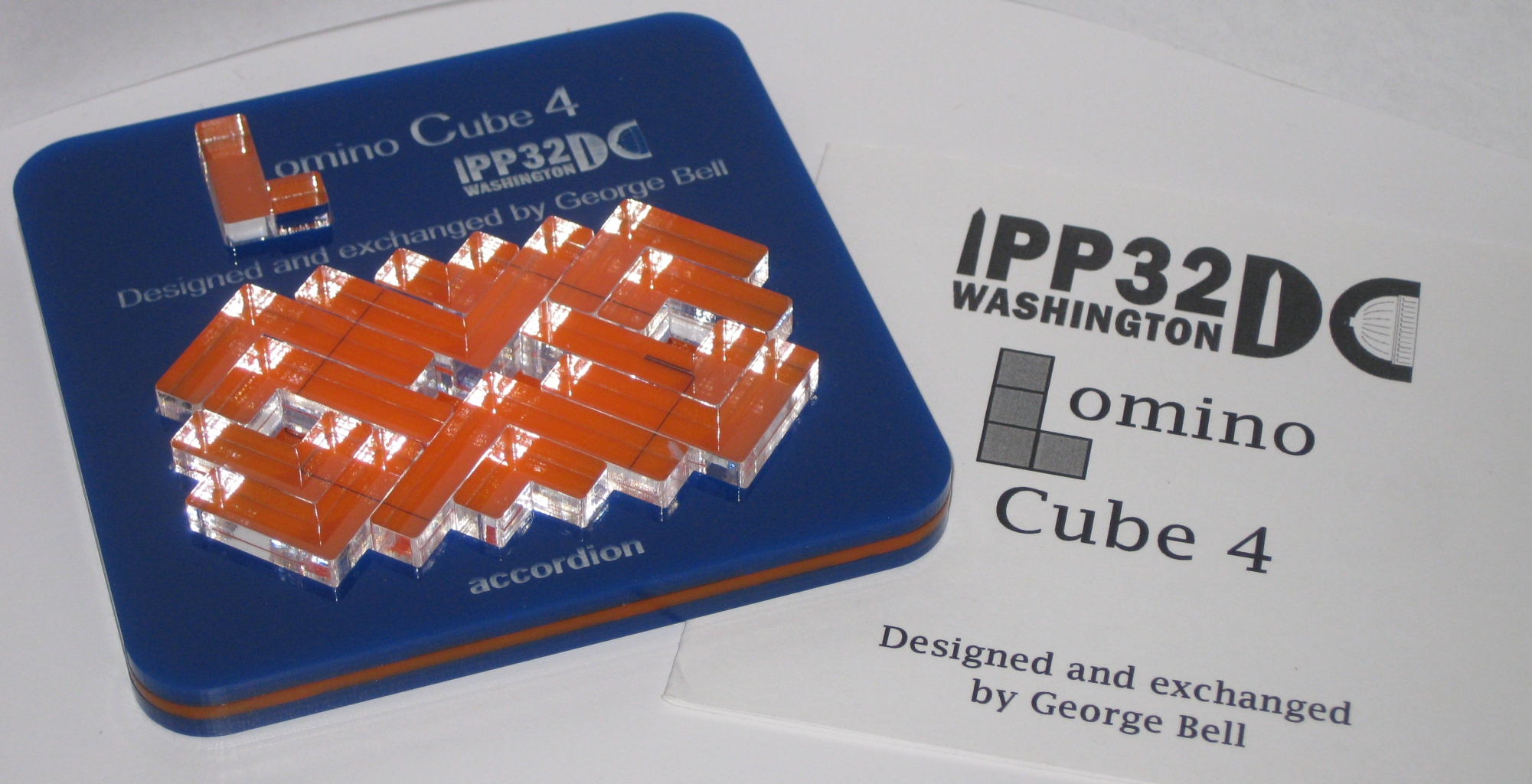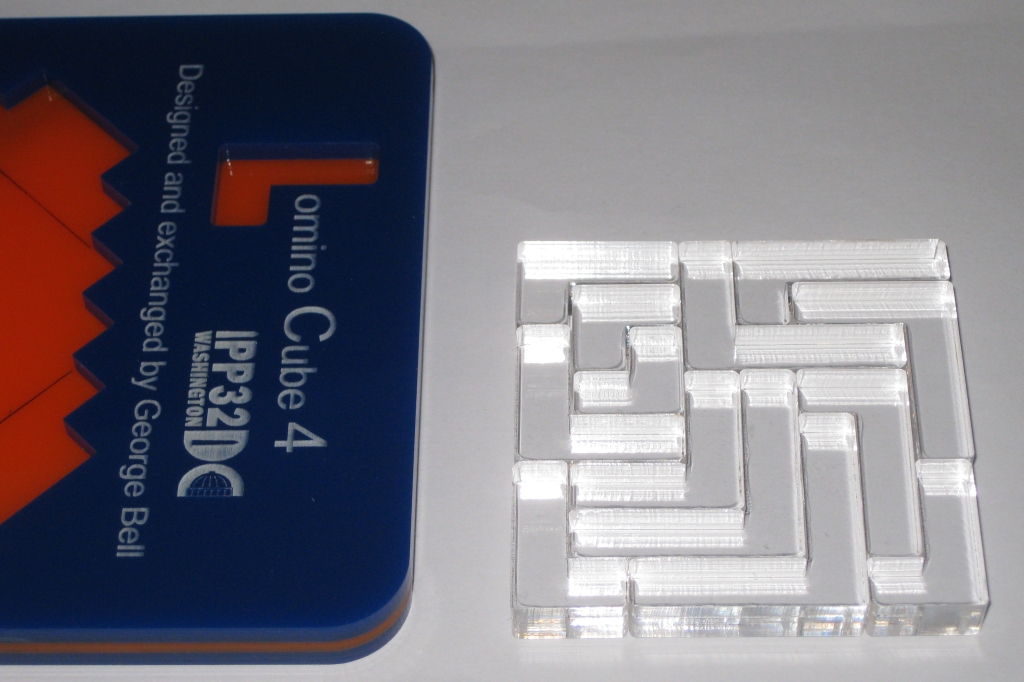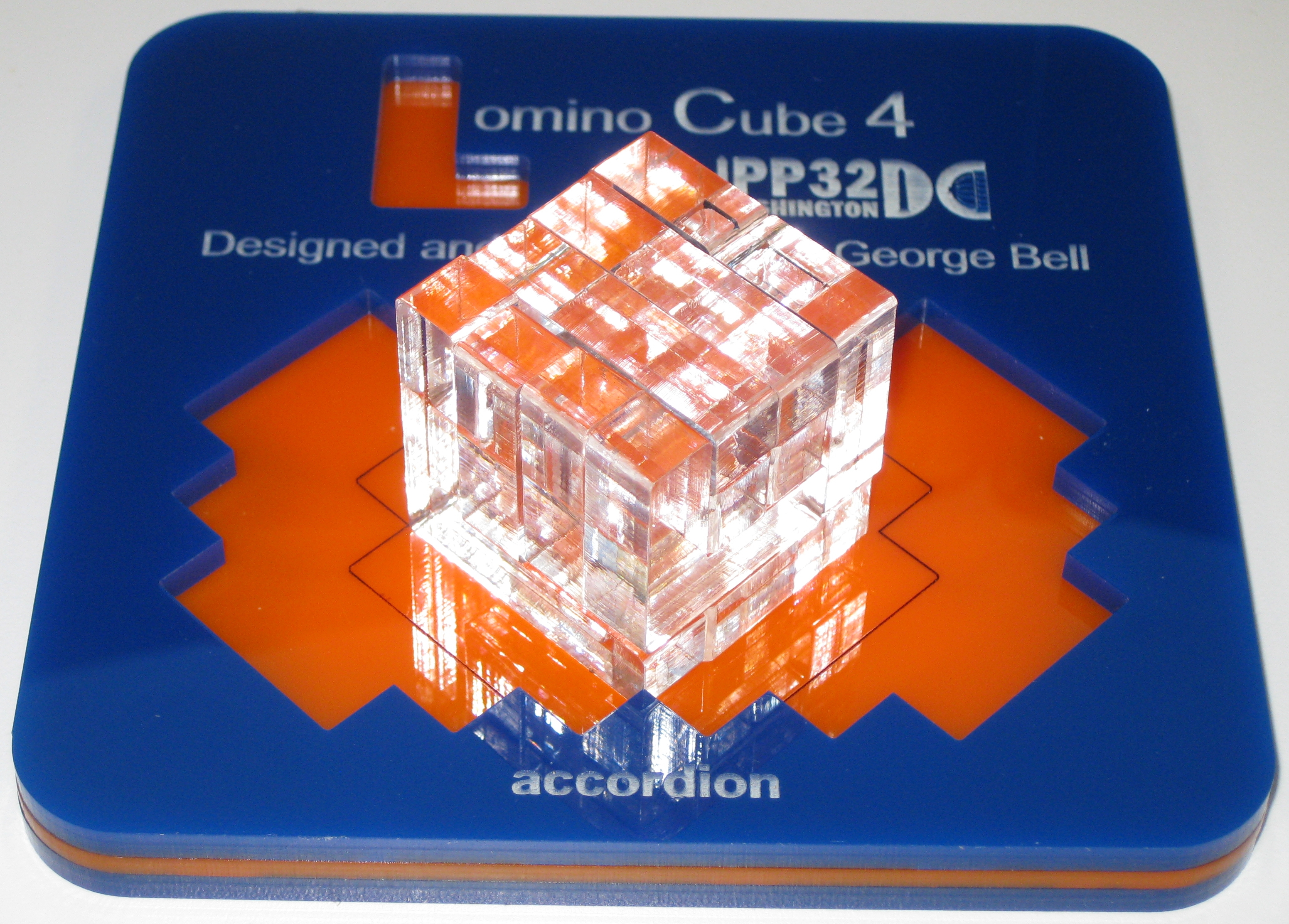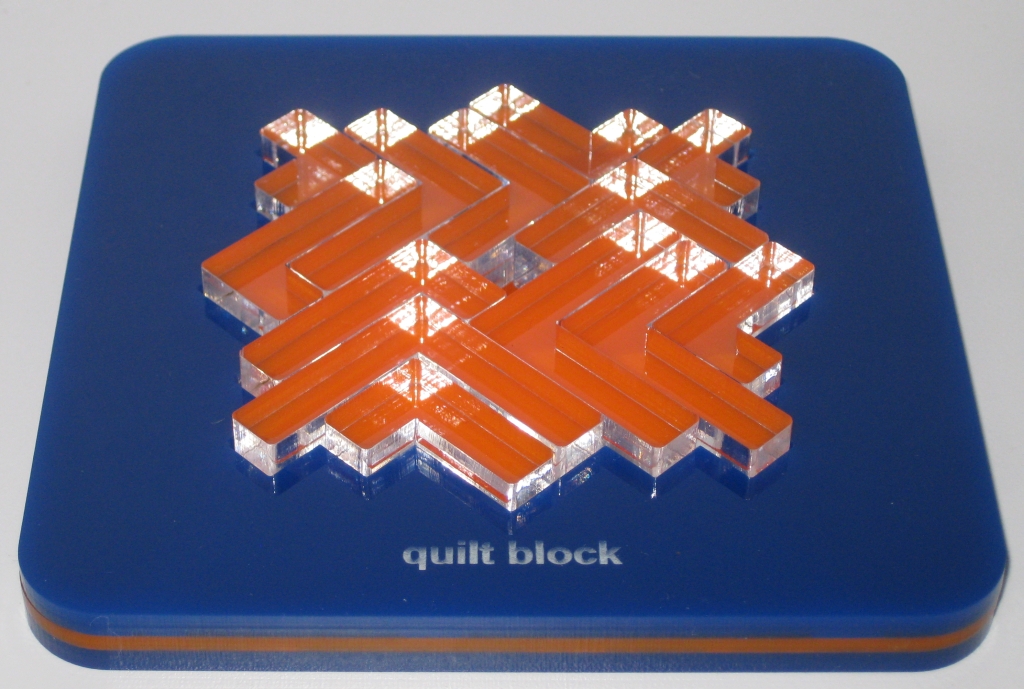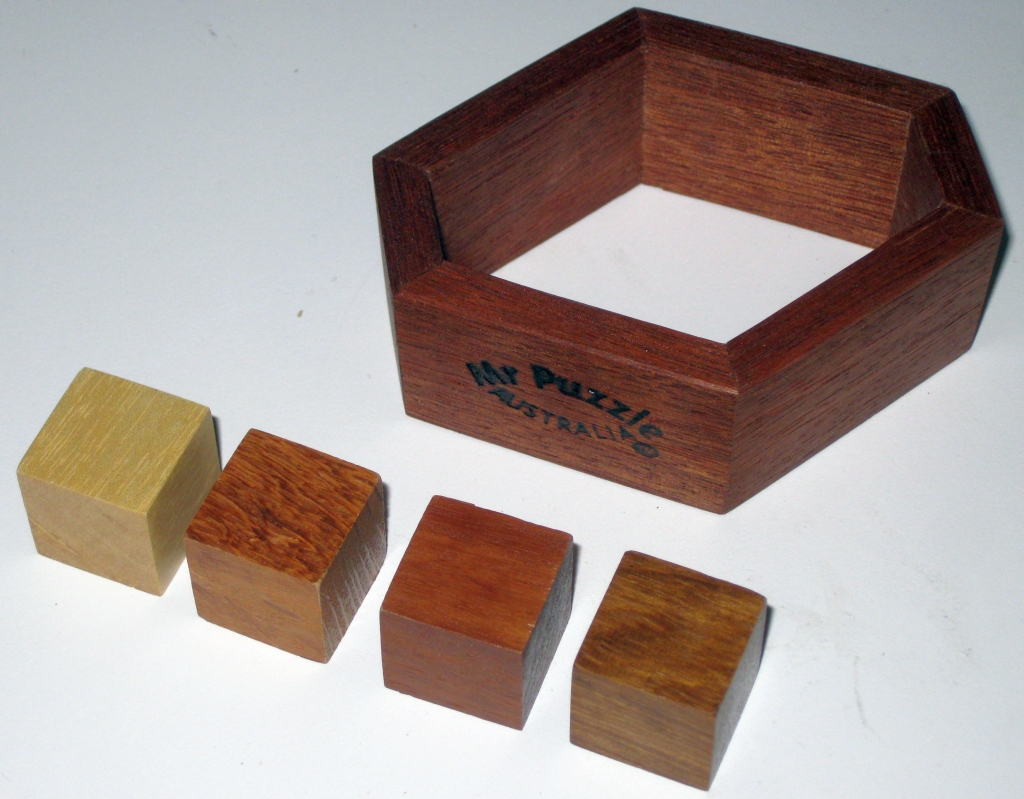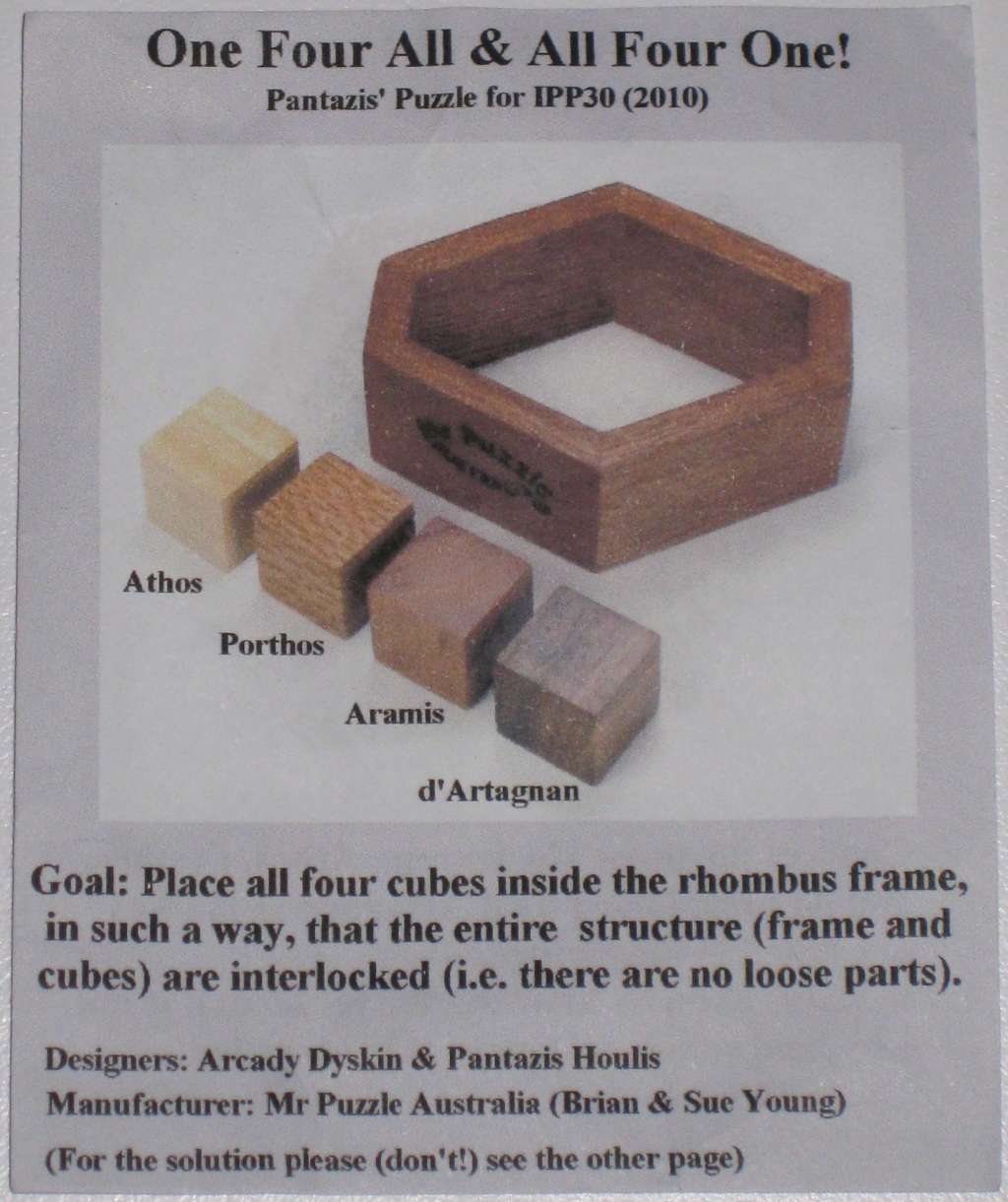I know many of you out there must be wondering what’s happened to me; I seem to have gone quiet again recently. I seem to recall doing the same thing after going to my first IPP two years ago. It’s certainly not that I’ve had a lack of puzzles to solve, nor that I’ve not been puzzling because I have. So I thought it was about time I put down a few thoughts on some of the things I’ve been playing with. Having so many new puzzles from the Edward Hordern Exchange I’ll try to give a few impressions, rather than a full review of each. I think if I tried to do a full review, it’s unlikely I’d get through them all before the next IPP!
First up here’s four of the puzzles I’ve played with and solved. From left to right we have “join the Club” by Scott Elliot, “TetraParquet” by Stan Isaacs, “Chameleon” by Pantazis Houlis and “Mixed Plate Burr” by Frans de Vreugd. Each of them is completely different from the others in this set, making them all a different challenge, and a very varied set of puzzles to play with. That’s one of the great things I found with the exchange. There’s a lot of different types of puzzler, and I know myself I tend not to buy certain styles of puzzle (Burr’s being one of those), but here you get a great sample of all types and styles, and I’ve found myself trying and enjoying a number of puzzles I would normally have passed by.
First up is Scott’s “Join the Club”. A fairly simple but great looking two piece puzzle where the goal is to join the two pieces into a club shape. This is one of what I’d call Scott’s signature propeller dissections of an object, which requires a little bit of thought as to how the pieces come together, and then some fun motion to assemble it. I’ve found this is a good “fiddle factor” puzzle, that I can sit at my desk and put together, then take apart repeatedly while I work on a problem. Fun puzzle, and definitely worth picking up a copy.
“TetraParquet” by Stan Isaacs is a beautiful looking object. This triangular pyramid is made from six colour paired pieces of contrasting woods. Designed and made by Wayne Daniel, his mastery of interesting angles, and incredibly accurate (and fine) joinery is apparent. Coming apart with a co-ordinate motion, the goal is to disassemble, scramble and re-assembe the pieces into the pyramid shape. The mortise and tenon joinery inside is something to me marveled at, and it’s this joinery which makes the puzzle. With some pieces having the mortise, and others the required tenon, arranging the pieces so all the slots line up with the tabs is a simple but satisfying challenge. And it looks great! Not a difficult puzzle, but a great showpiece, and a stunning piece of woodworking.
“Chameleon” by Pantazis Houlis which was made by the New Pelikan Workshop is an interesting idea. At it’s core is a wooden cube which has been veneered with several different woods. Onto that cube a number of paper flaps have been attached with printed wood species, and the goal is to transform the cube into one of five woods, by hiding the flaps and leaving only the single species visible. In concept it’s a nice idea, and it’s a simple puzzle that will take you all of five minutes to solve each combination. It’s certainly not the most visually stunning puzzle out there, but it is fun, and the idea is quite different. I doubt this will be to everyone’s taste, but I am glad I was able to play with it, and the fact that there is a real piece of each of the woods used on one face is a nice touch, and adds to the value.
The last of the puzzles I’ll touch on in this post is the “Mixed Plate Burr” by Frans de Vreugd. Now as I already mentioned, I’m not a huge burr fan, but I did pick this up and decide to give it a serious attempt. The pieces themselves are interesting, as they have been cut using a high pressure water cutter. Not my first thought for cutting wood, but it does produce a very accurate cut, making this type of puzzle repeatable at a reasonable scale. Something I find interesting as a woodworker is that looking at the edges where the water blade cuts, there are marks that could easily be mistaken for a saw blade. The Burr itself uses a mix of board burr pieces and standard burr pieces to make a standard six piece burr shape. Rated at 11.4 it’s a reasonable level burr, but not too high that it’s impossible. Where’s the proof? Well I managed to assemble it without any use of Burr Tools. As I found out, Burr Tools would have been no use to me on this particular puzzle anyway, so it makes the fact that I put this together even more satisfying. Even if like me, you’re not a burr man, take a look at this one. It’s a little different, and while the Baltic Birch Ply is not a collectors piece, the puzzle itself more than makes up for its looks.
